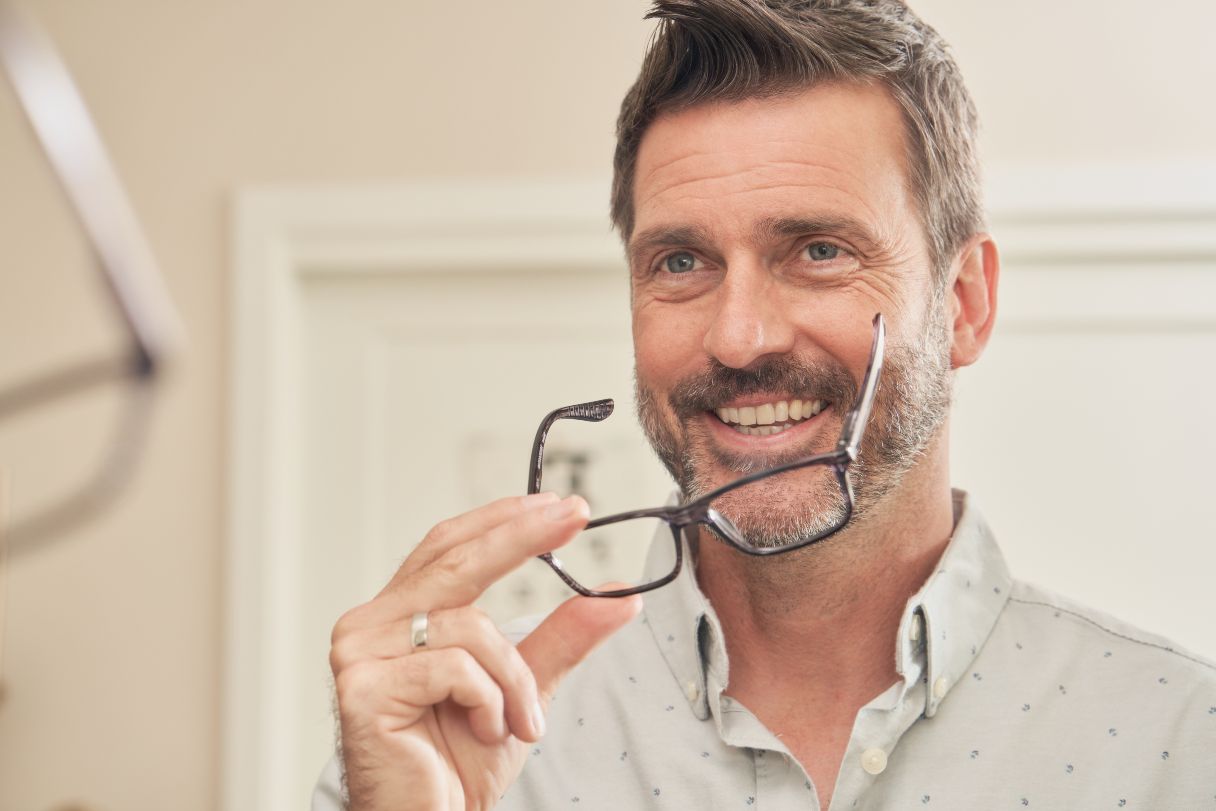If you suffer from dry eyes, there's a good chance you have meibomian gland dysfunction (MGD) — the leading cause of dry eye disease. It is estimated that 35.8% of the global population suffers from MGD, which affects normal functioning of the eye's oil-producing glands. While natural and prescription dry eye treatments may offer some relief, LipiFlow® can provide effective, long-lasting relief.1
Keep reading to learn more about LipiFlow, how much it costs and more.
What Is LipiFlow?
LipiFlow is an FDA-approved treatment for meibomian gland dysfunction. This 12-minute in-office treatment applies directed heat and massaging pressure to the upper and lower eyelids to help loosen and unclog blockages in the meibomian glands. Once treatment is complete, the glands can function properly and produce the normal oil or lipid necessary for hydration and maintaining high-quality tears.2
These oils keep the tears from evaporating too quickly and improve the overall health of the surface of the eye. LipiFlow has been shown to triple the effectiveness of gland secretion. For people who wear contact lenses, treatment with LipiFlow can increase the amount of time they can comfortably wear their contact lenses by up to four hours.3
Treatment can help alleviate the symptoms of MGD, including:1
- Dry, itchy, irritated and/or red eyes
- Feeling like there's something in the eye
- Blurry vision
- Eyelid inflammation (blepharitis)
- Trouble using contact lenses
Are You a Candidate for LipiFlow?
Your eye doctor will determine if you are a candidate for LipiFlow after a comprehensive eye exam to check for meibomian gland dysfunction. Tell your doctor if you:4
- Take medications that cause dryness
- Have a history of eye allergies or eyelid inflammation
- Have medical conditions that cause dry eye
- Have had punctal plugs inserted, as treatment may loosen the plugs
LipiFlow is not recommended for people who:4
- Have an eye infection
- Have active eye inflammation or a history of chronic or recurrent eye inflammation
- Had eye surgery in the last three months
- Had an eye injury in the last three months
- Had herpes of the eye or eyelid in the last three months
- Have eyelid abnormalities that affect eyelid function
How Much Does LipiFlow Treatment Cost?
The average cost of LipiFlow therapy ranges from $700 to $1,500.2 Depending on the severity of your condition, treatments may be needed every nine to 24 months to maintain relief.5 In addition to treatment costs, you may also be expected to pay an evaluation fee as well as a standard copay or insurance deductible for an office visit to your vision care provider.
Are LipiFlow Treatments Covered by Insurance?
LipiFlow therapy is not usually covered by insurance.5 While not guaranteed, some medical insurance plans may cover the dry-eye exam. Check with your specific provider to determine your benefit.
How LipiFlow Works
Before getting LipiFlow, you will need an eye exam so the doctor can make sure your dry eyes are being caused by meibomian gland dysfunction. If your eye doctor thinks you will benefit from the treatment, you'll be given instructions on how to prepare for LipiFlow treatment.6
Preparation
For 24 hours before your treatment, you should avoid the following:6
- Using any type of eye drops
- Submerging your eyes in a chlorinated pool
- Straining your eyes
You should arrive for your treatment with your eyes free of any products, including creams and makeup.
Procedure
Here's a general overview of the LipiFlow procedure:5
- The doctor applies anesthetic eye drops to your eyes so you don't feel anything during the treatment.
- Once the numbing has taken effect, the doctor will place dome-shaped devices over your eyes.
- Once in place, the device will send gentle pulses of heat to your eyelids. You may feel heat and pressure.
- The treatment lasts about 12 minutes.
Potential Risks and Side Effects
LipiFlow has been shown to be a safe and effective and treatment.7 As with any medical treatment, however, it's important to be aware of the potential side effects and risks.
LipiFlow may worsen or cause these side effects:4
- Eyelid or eye pain
- Irritation or inflammation of the eyelid or eye
- Ocular symptoms, such as burning, redness or sensitivity to light
LipiFlow is designed to prevent serious effects, such as burns or pressure injuries to the eyelids and eyes, as well as infections.4 Be sure to choose an eye doctor with experience providing LipiFlow treatments.
Recovery From LipiFlow Treatments: Tips and Timing
LipiFlow doesn't require any downtime and there aren't any special recovery instructions to follow. It doesn't affect your vision, so you should be able to drive after your treatment and resume your normal activities.8
Some people notice a change in their symptoms right away, but complete results take around six to eight weeks.8
While results vary based on the patient, LipiFlow treatment can continue to be effective and last up to one year.3
CareCredit Credit Card Financing for LipiFlow Treatment
Whether you're paying for eye surgery or getting an eye exam, the CareCredit credit card can help you pay for care where your insurance leaves off.* Use our Acceptance Locator to find a vision specialist near you that accepts CareCredit. Continue your wellness journey by downloading the CareCredit Mobile App to manage your account, find a provider on the go and easily access the Well U blog for more great articles, podcasts and videos.
In addition to vision care, you can also use your CareCredit credit card for dentistry, cosmetic, pet care, hearing, health systems, dermatology, pharmacy purchases, spa treatments and so much more within the CareCredit network. How will you invest in your health and wellness next?
Author Bio
Adrienne Santos-Longhurst is a writer who has been covering health and lifestyle for almost two decades. Her work has appeared in Healthline, Insider, Medical News Today and more.







